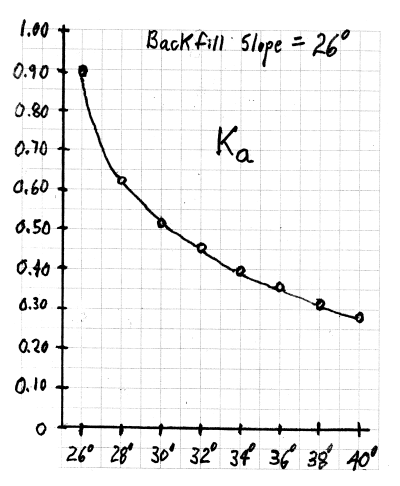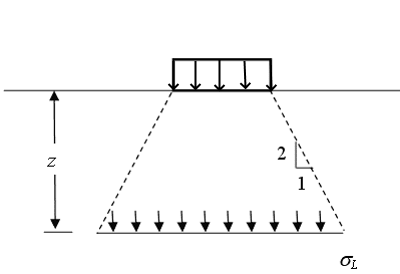Temporaryworks
Structural
I am designing an anchored reinforced concrete retaining wall for a sloped backfill supporting a road. The slope has currently failed, our partner geotechnical company will be designing a temporary soil nail solution to enable us to safely install the retaining wall and anchors, which will then form the permanent support solution. Please refer to attached sketch.
I have a query regarding how I could calculate the soil pressure against the wall. I have a lense of good quality backfill sat in front of some poor soil behind (top layer has friction angle = 26 and middle layer has friction angle = 28). Rankine theory doesn’t allow me to incorporate multiple layers of inclined soils, can you advise how I could calculate the wall pressure, incorporating the benefit of the superior soil backfill lense?
I could ignore the benefit of the backfill lense and just take 26 or 28 as my angle of friction and use rankine theory. I think that this may be very conservative as some of this backfill is set back quite far from the wall and the backfill lense in front of it with 40 degrees friction angle would definitely reduce the pressure on the wall. On the other side, if I took a angle of friction = 40 degrees, then this would neglect the poorer soil behind applying pressure.
Note: I have checked the slope stability of the soil as drawn and it is stable.
I have a query regarding how I could calculate the soil pressure against the wall. I have a lense of good quality backfill sat in front of some poor soil behind (top layer has friction angle = 26 and middle layer has friction angle = 28). Rankine theory doesn’t allow me to incorporate multiple layers of inclined soils, can you advise how I could calculate the wall pressure, incorporating the benefit of the superior soil backfill lense?
I could ignore the benefit of the backfill lense and just take 26 or 28 as my angle of friction and use rankine theory. I think that this may be very conservative as some of this backfill is set back quite far from the wall and the backfill lense in front of it with 40 degrees friction angle would definitely reduce the pressure on the wall. On the other side, if I took a angle of friction = 40 degrees, then this would neglect the poorer soil behind applying pressure.
Note: I have checked the slope stability of the soil as drawn and it is stable.


